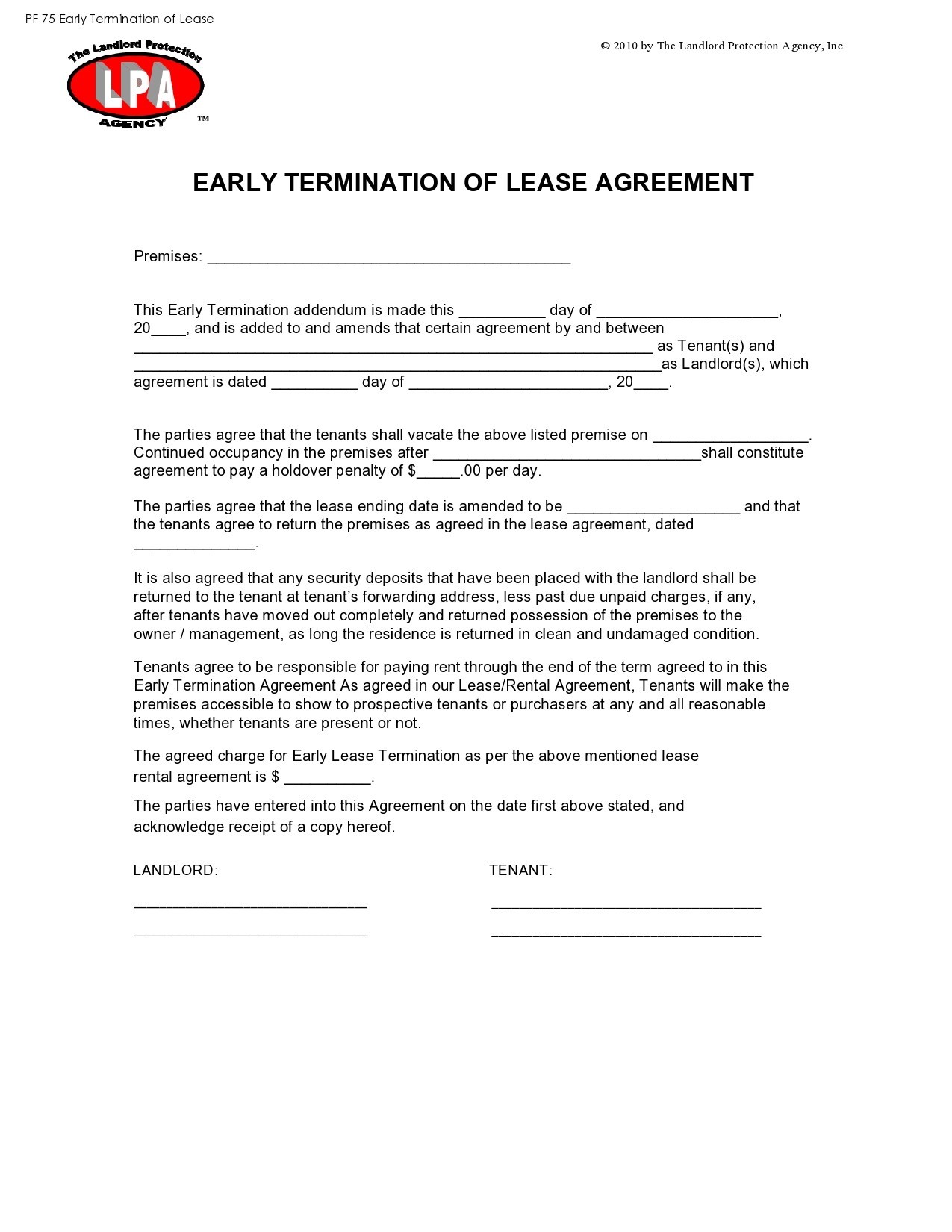
Decoding the Dynamics of Lease Termination Conditions
Lease termination is a significant aspect of the tenant-landlord relationship, and understanding the conditions surrounding this process is crucial for a seamless exit. Let’s delve into the intricacies of lease termination conditions and how tenants can navigate them effectively.
Comprehensive Review of Lease Agreement
Before embarking on the lease termination journey, tenants should conduct a comprehensive review of their lease agreement. This involves understanding the terms, conditions, and clauses related to termination. Each lease agreement is unique, and tenants need to be aware of specific conditions outlined in their contract.
Notice Periods and Timelines
Lease termination conditions often include notice periods, specifying the amount of time a tenant must provide before officially ending the lease. Understanding these timelines is essential, as failure to adhere to the specified notice period can lead to complications. Tenants should plan their exit strategy well in advance to meet these requirements.
Documenting Property Conditions
As part of the lease termination process, tenants are typically required to return the property in the same condition as when they moved in, accounting for reasonable wear and tear. Documenting the current state of the property through photographs and written records can serve as crucial evidence in case of any disputes related to property condition.
Financial Obligations and Outstanding Payments
Lease termination conditions include financial obligations that tenants must fulfill before concluding their tenancy. This involves settling any outstanding rent, utility bills, or other agreed-upon payments. Fulfilling these financial commitments ensures a clean termination and can impact the return of the tenant’s security deposit.
Understanding Termination Fees and Penalties
Some lease agreements may include termination fees or penalties for ending the lease prematurely. Tenants need to be aware of these conditions and factor them into their decision-making process. Understanding the financial implications of termination fees helps tenants make informed choices.
Negotiating Terms with the Landlord
In certain situations, tenants may find it beneficial to negotiate termination terms with their landlords. This could include discussing the possibility of reducing notice periods, adjusting termination fees, or addressing specific conditions in a mutually agreeable manner. Open communication with the landlord is key to successful negotiations.
Returning Keys and Access Devices
Lease termination conditions often specify the return of keys and access devices. Tenants should ensure that all keys, electronic fobs, or access cards are returned to the landlord or property management according to the stipulated conditions. This formalizes the end of access to the rental property.
Obtaining Written Confirmation
Upon fulfilling all lease termination conditions, tenants should seek written confirmation from the landlord. This document acknowledges the successful completion of the termination process and can be valuable in case of any future disputes. Written confirmation provides clarity and protection for both parties.
Exploring In-Depth Insights on Lease Termination Conditions
For tenants seeking a more in-depth understanding of lease termination conditions and valuable insights on navigating the process, visit Lease Termination Conditions. This comprehensive guide covers various aspects of the termination process, offering practical advice for tenants facing lease conclusion.
Conclusion: A Seamless Transition
In conclusion, navigating lease termination conditions involves a combination of awareness, communication, and adherence to the terms outlined in the lease agreement. By understanding these conditions and taking proactive steps, tenants can ensure a smooth and successful transition at the end of their tenancy.
